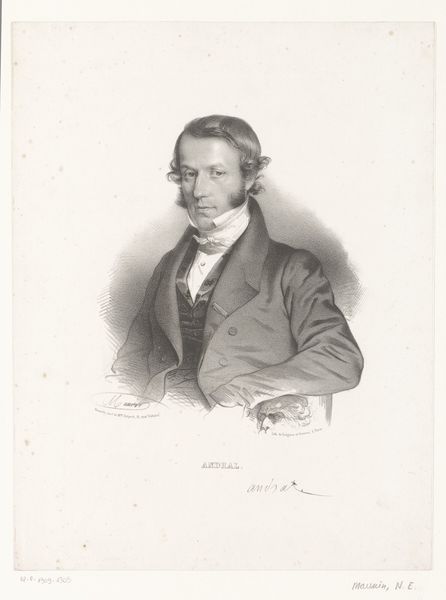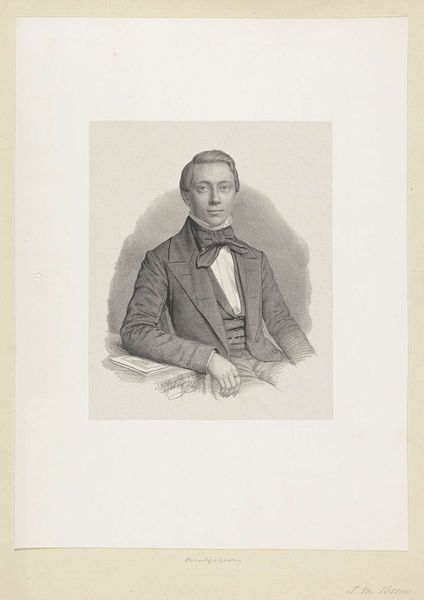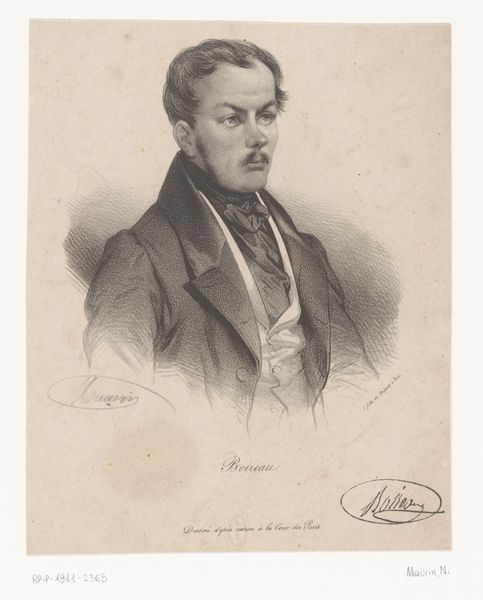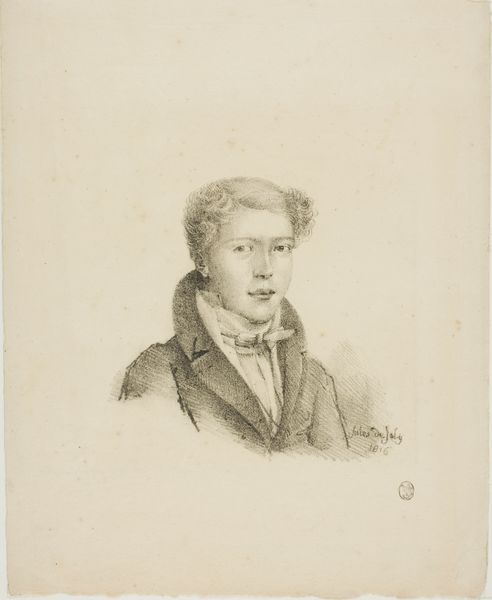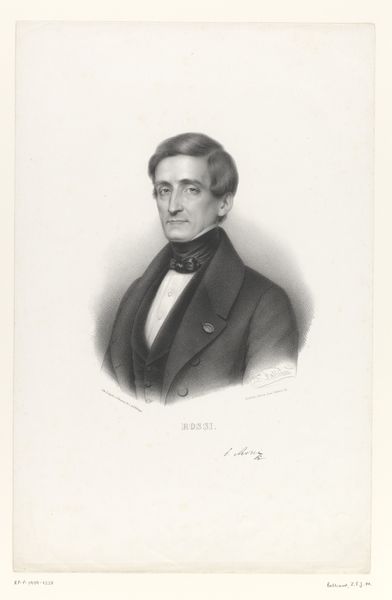
Dimensions: height 211 mm, width 148 mm
Copyright: Rijks Museum: Open Domain
Johan George Lodewijk Rieke created this portrait of Henri Zeeman using lithography, a printmaking technique, on paper. Lithography, invented in the late 18th century, allowed for relatively quick and inexpensive reproduction of images, a departure from the labor-intensive methods like engraving. The process begins with a smooth stone or metal plate. The artist draws on the surface with a greasy crayon, then treats the plate so that ink adheres only to the drawn areas. The plate is then pressed onto paper, transferring the image. Looking closely, you can see the subtle tonal variations achieved through the lithographic process. The medium lends itself to capturing the fine details of Zeeman's face and clothing. Lithography’s accessibility democratized image-making and catered to a growing market for portraits and illustrations. This print reflects a shift in artistic production, one increasingly shaped by industrialization and consumer culture. Recognizing the labor and materials involved in processes like lithography invites us to reconsider the art object’s place within broader economic and social systems.
Comments
No comments
Be the first to comment and join the conversation on the ultimate creative platform.
